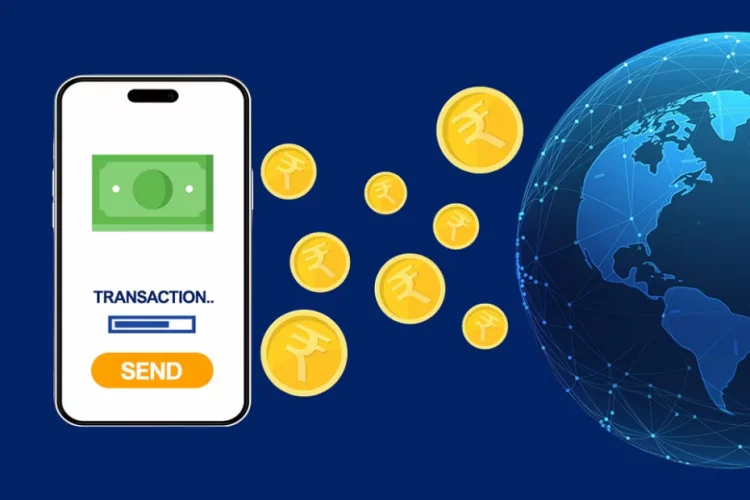Cross-border payments are the lifeblood of global commerce, enabling individuals, businesses, and institutions to transact across borders. However, the traditional systems that facilitate these transfers—often relying on correspondent banking networks, multiple intermediaries, and legacy infrastructure—are slow, costly, and opaque. Blockchain technology has emerged as a potential game-changer, promising faster, cheaper, and more secure international transactions. But can it truly deliver on these promises?
This article explores the extent to which blockchain can address the persistent inefficiencies and security concerns of cross-border payments.
1. The Current Challenges of Cross-Border Payments
Traditional cross-border payment systems, such as SWIFT and correspondent banking, suffer from several fundamental limitations:
- Slow processing times: International payments can take 2–5 days to settle due to time zone differences, multiple intermediaries, and manual verification.
- High fees: Each intermediary charges service fees, often leading to substantial costs, especially for small-value remittances.
- Lack of transparency: Senders and recipients may not know the payment status until completion. Tracing issues or delays is often difficult.
- Limited accessibility: Many users, especially in developing regions, lack access to international banking infrastructure.
- Fraud and compliance risks: Fragmented systems make it harder to track illicit flows and enforce Know Your Customer (KYC) and Anti-Money Laundering (AML) rules efficiently.
These inefficiencies create friction in global trade, migration remittances, and international commerce.
2. How Blockchain Improves Efficiency in Cross-Border Transactions
Blockchain offers several features that can significantly improve the speed and efficiency of international payments:
- Peer-to-peer transactions: Blockchain allows value to be transferred directly between parties, without intermediaries or correspondent banks.
- Real-time settlement: Transactions on blockchain networks can settle within minutes or even seconds, regardless of geographic distance or banking hours.
- 24/7 availability: Unlike traditional banking systems, blockchains operate continuously, enabling around-the-clock transactions.
- Cost reduction: Fewer intermediaries and automation through smart contracts lead to lower transaction and reconciliation costs.
Blockchain platforms like RippleNet, Stellar, and JP Morgan’s Onyx are already being used to settle international payments more quickly and efficiently than legacy systems.
3. Enhancing Security and Trust Through Decentralization
Blockchain’s decentralized and cryptographically secured architecture strengthens the security of cross-border payments in several ways:
- Immutability: Once a transaction is recorded on a blockchain, it cannot be altered, reducing the risk of tampering or fraud.
- Cryptographic validation: Every transaction is verified using complex cryptographic algorithms, ensuring that only authorized parties can initiate and complete payments.
- Transparent audit trails: Blockchain maintains a verifiable, time-stamped record of all transactions, making auditing and dispute resolution more reliable.
- Reduced counterparty risk: Real-time settlement minimizes the exposure to counterparties defaulting before transaction completion.
Together, these attributes build trust in international transactions, especially in regions where financial institutions may lack credibility or oversight.
4. Examples of Blockchain in Cross-Border Payments
Several companies and financial institutions are already piloting or deploying blockchain-based payment systems:
- Ripple: Enables real-time, low-cost cross-border payments between financial institutions, with partners including Santander and SBI Holdings.
- Stellar: Provides a blockchain infrastructure for remittances and micro-payments, particularly in underserved regions.
- Visa B2B Connect: Uses elements of distributed ledger technology to enhance international B2B payments with speed and security.
- Central Bank Digital Currencies (CBDCs): Countries like China, Singapore, and the UAE are exploring or testing blockchain-based digital currencies to streamline cross-border settlements.
These use cases show growing confidence in blockchain’s practical utility for cross-border financial transactions.
5. Challenges and Limitations of Blockchain in This Context
Despite its advantages, blockchain is not a complete solution—yet. Several challenges remain:
- Regulatory uncertainty: Cross-border payments touch multiple legal jurisdictions. Blockchain networks must comply with differing KYC, AML, and data protection rules.
- Interoperability: Blockchain platforms are often siloed. Without standardization, seamless integration between networks and legacy systems remains difficult.
- Volatility of crypto assets: Some blockchain payment systems rely on cryptocurrencies, whose price fluctuations pose risks for value transfer. Stablecoins or CBDCs offer alternatives but are still maturing.
- User adoption and trust: Many institutions are cautious about adopting new infrastructure without proven long-term reliability and regulatory backing.
- Scalability: Some public blockchain networks struggle with throughput, which may limit their ability to handle high volumes of global transactions.
Solving these issues is critical for blockchain to scale as a cross-border payments infrastructure.

6. The Future Outlook: Blockchain as Part of a Hybrid System
It is increasingly likely that blockchain will complement rather than completely replace existing payment infrastructure. Hybrid models—where blockchain handles core settlement functions while connecting with regulated financial institutions and compliance frameworks—offer a realistic path forward.
Key developments to watch include:
- CBDC interoperability for state-backed cross-border payment systems
- Blockchain-based SWIFT alternatives that combine regulatory standards with decentralized technology
- Smart contract automation for complex, conditional international transactions (e.g., trade finance or escrow)
As more governments, banks, and fintech companies align around common standards and platforms, blockchain’s role in cross-border payments will likely expand significantly.
Conclusion
Blockchain holds strong potential to resolve many of the entrenched issues in cross-border payments, including inefficiency, high costs, and limited transparency. Its ability to support real-time, peer-to-peer, and cryptographically secure transactions offers a leap forward over traditional systems.
However, full-scale adoption is contingent on overcoming technical, regulatory, and institutional hurdles. While blockchain may not be a silver bullet, it represents a foundational technology that—when integrated thoughtfully—can vastly improve how money moves across borders in the digital age.
















































